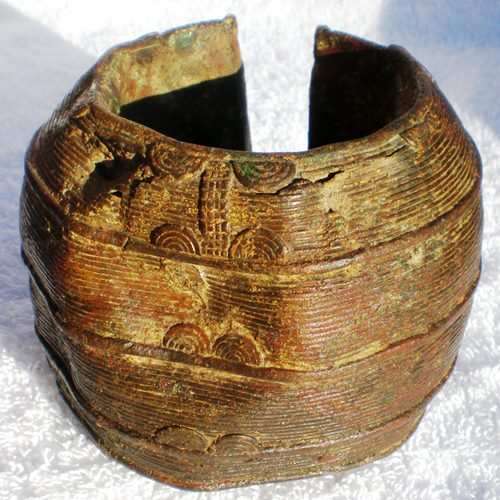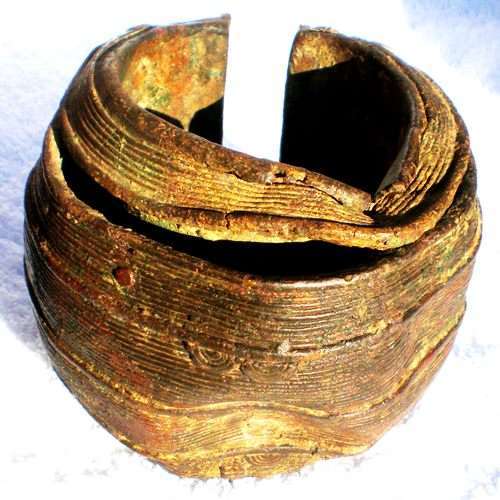
African Currency Anklet. Baule Tribe, Ivory Coast. Scarce 19th Century. COPPER 751 g.
Check my rate
| Main centres: | 1-3 business days |
| Regional areas: | 3-4 business days |
| Remote areas: | 3-5 business days |

| Main centres: | 1-3 business days |
| Regional areas: | 3-4 business days |
| Remote areas: | 3-5 business days |

| DESCRIPTION | A large African currency copper anklet dating from the 19th Century Used by the Baule tribe from the Ivory Coast for transactions such as buying livestock or for matrimonial transactions as well as for a display of wealth. It weighs 751 g and has a diameter of 11 cm at the widest point and the thickness of the anklet is about 8.5 cm. The beautiful antique anklet on auction here is shown in the image above and further images to illustrate it more closely appear below. Have a good look at them and, if there is anything you are unsure about, please ask a question. |
| CONDITION | There is beautiful patination and cracking from wear on this anklet. This is not regarded as damage, but rather adds to the collectability and authenticity of this scarce and unusual item. |
A beautiful, scarce, authentic and very collectable item. These anklets were produced by African metal smiths through a combination of the lost wax process and sand mold casting and were used by the more elite to display their wealth. They were also used to purchase expensive items (for cheaper items the trade was normally done with beads, small livestock, shells etc). Copper was a very expensive commodity and an anklet such as the one on auction here had a lot of purchasing power. The general currency for purchasing items of substantial value in West Africa until the beginning of the 20th century was the manilla (a copper 'C' shaped bracelet with 'elephant foot' ends) which was produced in Europe and initially intended for the slave trade. The anklet on auction here was, however, produced in Africa from locally mined copper or from manillas which were melted down and it had more status value and also cultural value than the manilla. The anklets were worn by both men and women, often for decades, and were only taken off if they were needed for trading purposes. If worn by a woman, she did not own it (since she was also just a possession of her father or husband). This is a supremely collectable item (really a museum piece) - so if you are interested in this item and are not an expert on African currency it would be advisable to research it on the Internet and look at websites such as those of the Hamill Gallery of Tribal Art and the Africa and Beyond Art Gallery. |

